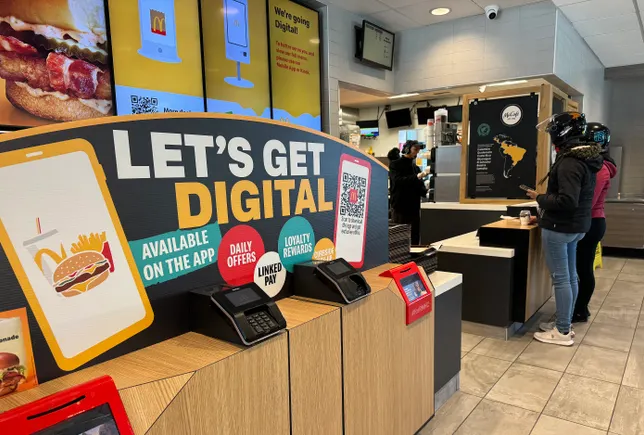Since the world has warmed more than two degrees Celsius for the first time since the industrial era, the climate crisis is on everyone’s mind. For this reason, in order to safeguard the future of our planet, it is morally required of you as a business to lower the carbon footprint of your marketing. It might also assist you in remaining ahead of customer demands. You can position your company as one that is focused on sustainability, as 55% of buyers are prepared to pay extra for environmentally friendly products.
Your marketing department is among the many areas of your company that stand to gain from an environmental makeover. Since marketing initiatives are here to stay, all that’s needed is to make them more sustainable.
In marketing terms, what does sustainability mean?
Reducing a company’s carbon footprint through marketing techniques is the goal of marketing sustainability, much like any other industry. Many businesses don’t take into account how marketing affects the environment, particularly in this increasingly paperless society. But one advertising campaign actually produces 70 tons of CO2 equivalent emissions, according to CEPSA.
Sustainability is increasingly a key consideration when evaluating the success of a company’s strategy, as opposed to solely concentrating on the revenue from marketing initiatives. In addition to promoting items to boost sales and engagement, an environmentally responsible company will also take the campaign’s environmental impact into account.
A further way to include sustainability into marketing is to inform customers about the effects on the environment.
Why should your marketing have a smaller carbon footprint?
In the modern corporate environment, it is imperative that companies take action to lessen their advertising-related carbon footprint. Let’s examine the reasons why:
1. Environmental accountability
The environmental impact of advertising is substantial because of the energy used by servers, data centers, and digital infrastructure. You can demonstrate your dedication to being ecologically sustainable during your advertising endeavours by lowering your carbon footprint.
2. Reducing the effects of climate change
The worldwide problem of climate change is exacerbated by the carbon emissions from advertising. Reducing the carbon footprint associated with your advertising helps to mitigate environmental degradation.
3. Establishing a positive reputation for a brand
In a world where businesses and individuals place a high value on sustainability, adopting an eco-friendly marketing strategy can persuade ethical customers to choose your brand over rivals.
78% of customers believe that sustainability is important, according to the roundup. Therefore, by lessening your carbon impact, you can draw in eco-conscious customers who are searching for sustainable options. Better yet, lessening your carbon impact can help improve the reputation of your company. Numerous international firms have committed to making marketing more sustainable by implementing the WFA Planet Pledge methodology.
4. Savings on expenses
An extensive marketing strategy may be costly. You can save money on marketing expenses by cutting waste and increasing the effectiveness of your campaigns when you use less energy. Making attention-grabbing interactive creative will help you spread your message with less money and effort.
5. Durability over time
Numerous elements affect your business’s long-term performance. For example, if you have to fulfill your obligations under SOX, HIPAA, and GDPR.
You’ll probably need to demonstrate your sustainability efforts in the future as well. In a world where ecological consciousness is valued, lowering the environmental effect of your advertising and adopting eco-friendly techniques will guarantee that your business stays competitive.
SEVEN WAYS TO REDUCE CARBON FOOTPRINT IN MARKETING:
1. Make use of energy-saving technology for remote work
You can significantly lessen the environmental impact of your marketing campaigns by utilizing energy-efficient telecommuting equipment. We rely a lot on digital tools and platforms in marketing, which need electricity to run.
There are several benefits to selecting energy-efficient routers, laptops, and monitors for remote work. Because these gadgets use less power, less energy is used for all aspects of marketing, including communication, data analysis, and content development.
Let’s see an instance of an outbound sales call center with energy-efficient equipment.
Say you’re a marketing associate working for a contact center that uses obsolete laptops and phones. One potential solution to lower the company’s carbon footprint in marketing is to recommend that remote agents be outfitted with energy-efficient telecommuting gear. This includes offering low-power consumption monitors and laptops that are energy-efficient and have longer battery lives. These tools assist agents in finishing their work with the least amount of energy consumption and fewer replacements needed, which can result in e-waste.
We can significantly lower the carbon emissions connected with these activities by reducing our energy usage. Furthermore, the lifespan of energy-efficient devices is frequently longer, requiring fewer replacements and reducing the environmental impact of both producing and disposing of outdated equipment.
2. Use digital content production
In the realm of marketing, using digital content generation for marketing purposes is already the next big thing. Online advertising enables companies to access a larger worldwide audience and draw in a much larger clientele.
But producing content digitally also lessens the carbon impact associated with conventional marketing techniques. Using just digital channels for marketing reduces the demand for paper, which contributes significantly to your carbon footprint.
Effective creation and distribution of digital content can be facilitated for marketing teams through the use of sales enablement solutions. Using digital tools, you can create visually appealing and interactive sales collateral rather than printing brochures or catalogues. This lowers paper consumption and, consequently, carbon emissions in addition to saving printing costs.
You can reduce your environmental effect and further optimize your marketing processes by taking into account Excel alternatives for data analysis and reporting.
Verify if the servers hosting your sales enablement tools are energy-efficient, as these require less power.
3. Utilize data-driven insights to optimize marketing workload
Reducing the carbon footprint of your marketing initiatives can benefit your company by optimizing the workload associated with marketing through data-driven insights. However, how?
Print advertising, bulk mailings, and live events are examples of resource-intensive traditional marketing tactics. Regretfully, there are carbon emissions from this.
Consider utilizing an IVR contact center in place of experimenting with different approaches to get people interested in your marketing campaigns. This can help lower the carbon footprint of marketing by offering insights into customer interactions based on data.
Businesses can improve their marketing plans, more precisely focus their efforts, and steer clear of cold calling disinterested customers by reviewing call data. This results in less energy being used and less resources being wasted from a failed marketing outreach effort.
Additionally, more individualized digital material that reaches the right people at the right time can be created with the help of IVR contact centers. As a result, fewer print materials and tangible promotions are required.
4. Include environmentally friendly display adverts in your campaigns.
On sustainable energy, display advertisements by Nexd Creative Management are displayed.
Paid search and social media are frequently the first paid marketing platforms that companies consider. But programmatic, or display advertising, is a more sustainable and underutilized medium than the others (albeit it can also include video). Include interactive advertisements in your marketing campaigns that are more effective, perform better, and use less energy.
5. Make use of web hosts that are renewable
One of the most important ways to lower the carbon footprint of your company’s marketing is to use web hosting companies that rely on renewable energy sources.
Conventional web hosting companies frequently use fossil fuels to run their data centers, which release a lot of green gases in the atmosphere.
Renewable web hosting companies use clean energy sources including hydroelectricity, solar power, and wind to run their data centers.
A website hosted by a provider that powers its data centers with solar or wind power, for example, lessens the carbon footprint associated with data hosting. It shows a dedication to environmentally friendly hosting techniques and promotes the use of renewable energy in the ICT sector.
Making the switch to renewable energy will assist you in lowering the carbon emissions generated by managing digital marketing efforts and hosting your company website. Additionally, you may minimize your environmental effect and more closely integrate your online presence with sustainability.
6. Make the switch to digital
Even though you may have already done so, reducing the amount of paper you use in all of your marketing initiatives will help you lessen your environmental effect.
Brochures, catalogs, and flyers are frequently distributed as part of traditional marketing campaigns. But doing so uses up raw commodities like paper and ink, energy, and water. Moving digitally is the key to lowering your carbon footprint.
Video and display advertising have been shown to be not only far more successful than traditional paper-based marketing, but also significantly more environmentally friendly because they require fewer resources.
7. Bring in freelance creatives and marketers
Your first thoughts typically revolve on the convenience and flexibility of working from home. However, have you ever thought about how much more ecologically beneficial remote work is? For example, when fewer people must drive to work, air quality might increase and emissions can drop.
Not to mention that remote workers don’t require real office space, which eliminates all associated expenses and consumptions like hardware, supplies, and utilities.
To reduce your carbon footprint, why not look into hiring remote creatives, advertising, and marketers? These days, a reliable internet connection is all that a gifted individual in these industries needs to do their job well.
Conclusion:
Use these 6 tactics right now to lessen the carbon footprint of your marketing.
Your company has to start carefully considering its carbon footprint and how to permanently cut emissions in the modern, climate-conscious world. Proactively protecting the environment and enhancing your brand image can be achieved by implementing proactive measures in all facets of your business, including marketing.
Your firm will be able to maintain its viability and profitability for years to come if you use renewable web hosting providers, hire remote marketers, optimize marketing with data-driven insights, and implement digital content creation. These actions will also help you reduce your environmental effect.








Leave a Reply